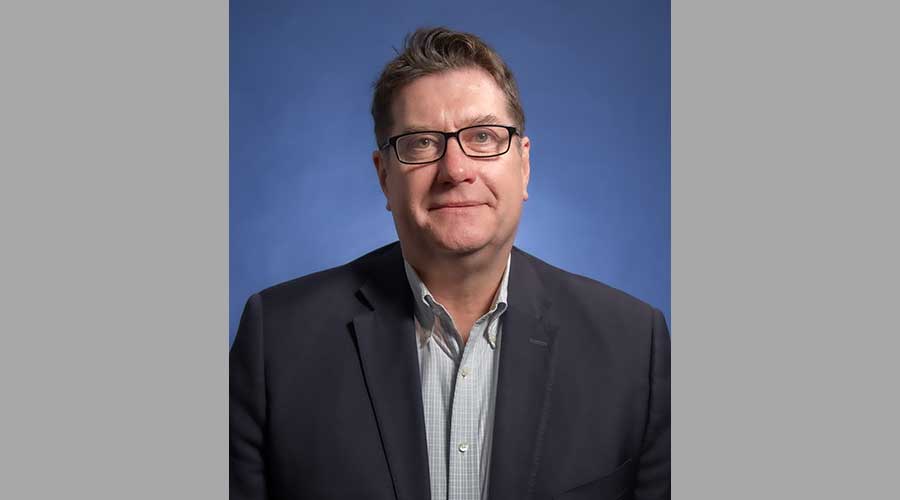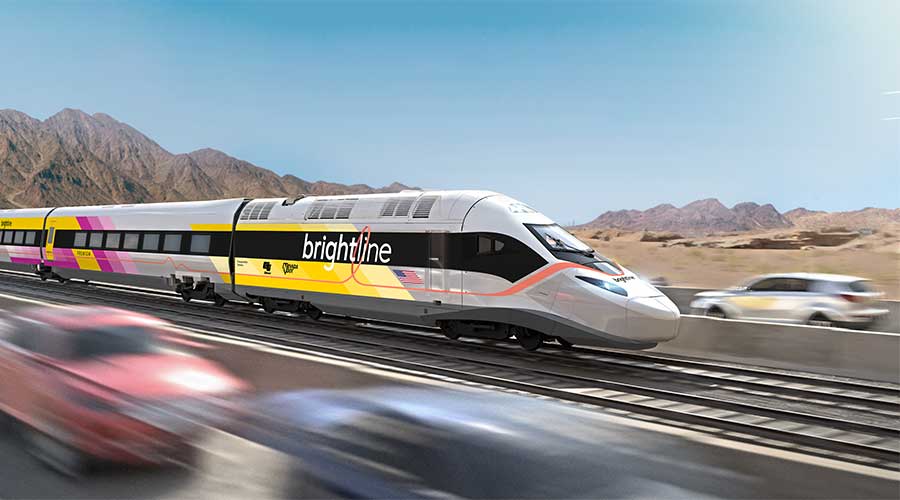Stay updated on news, articles and information for the rail industry
December 2013
Part 3 : Transit CEOs to focus on transportation bill reauthorization, capital projects in 2014
Rail News: Passenger RailTransit CEOs to focus on transportation bill reauthorization, capital projects in 2014
— by Angela Cotey, associate editor
Ask any transit agency executive what their top-of-mind concerns and challenges are for 2014, and their responses likely will be the same as they were heading into the past few years. Perhaps that's because transit issues are best characterized not by what happens in any given year, but by the economic, social and political circumstances that shape long-term trends.
Transit agency chiefs will spend 2014 addressing the growing demand for public transit, be that through capital projects, long-range planning or service improvements. They'll do so in an environment where state and local dollars still are scarce due to the recession's fallout, and federal funding remains uncertain, with Highway Trust Fund revenue waning and the surface transportation bill expiring on Sept. 30, 2014.
"We have to figure out a way to continue to invest in transit infrastructure," says Valley Metro Chief Executive Officer Steve Banta. "It's economic development, it's mobility, it's all of the things we're challenged with on a day-to-day basis."
In the Phoenix area, Valley Metro has been investing heavily the past several years. In 2004, voters approved Proposition 400, a 20-year, half-cent transportation sales tax that would help fund a plan to add 57 miles of high-capacity transit in the region.
The plan includes Valley Metro's 20-mile light-rail starter line, which opened in December 2008 and serves Phoenix, Tempe and Mesa, Ariz. Now, the agency is constructing the $200 million, 3.1-mile Central Mesa extension, scheduled to open in fall 2015. Valley Metro also is building a three-mile light-rail extension to northwest Phoenix that's scheduled to open in mid-2016.
"Our focus in 2014 will be on those projects," says Banta, adding that the agency also has six other transit corridors in various stages of planning.
Valley Metro officials also will focus on how they, with limited revenue, can continue to complete those projects.
"Because of the economic downturn, we're not going to meet the forecasted revenue under Prop 400, so we're reprioritizing our corridors and looking for creative project delivery methods," says Banta.
Despite the lower revenue projections, the agency needs to ensure it can build all projects included as part of Proposition 400, so that it is well-positioned to seek another half-cent sales tax when the current one expires.
To cut costs on the Central Mesa extension, the agency is employing a design-build method, which streamlines the construction and design process. For the Northwest Phoenix extension, Valley Metro is using a construction manager at- risk method, in which the construction manager is responsible for subcontracting construction work and ensuring it is completed on budget. For future projects, Valley Metro officials are considering the possibility of entering into public-private partnerships.
"For us, it's not the financing that's a problem, it's the funding plan," says Banta. "You can come up with creative ways to finance a project. The difficult piece is figuring out how to pay it back."
Sound Transit's Sales Tax Slide
Sound Transit is in the same boat. In 2008, Central Puget Sound-area voters approved a 15-year sales tax increase to fund a series of public transit projects, including expanded commuter-rail service and 36 miles of additional light-rail service. But the recession began shortly after the $17.8 billion plan was approved, and sales tax revenue has come in about 30 percent less than anticipated, leaving the agency with a $4.6 billion funding gap.
"For most transit agencies, our biggest funding option is a sales tax, and for the past four years, the base of that sales tax ... has shrunk. Once that money is gone, it's gone forever," says Sound Transit CEO Joni Earl. "Even with the economy rebounding, we don't believe we'll get back to what the sales tax was in 2007 and 2008 until 2016. So, we have to patch funding together for these big, complex projects."
For some of its projects, Sound Transit is relying on federal funding, including Transportation Infrastructure Finance and Innovation Act (TIFIA) loans, Transportation Investment Generating Economic Recovery grants and New Starts grants.
In the coming year, managing those projects will be priority — and challenge — No. 1. Sound Transit's 2014 capital program totals about $720 million, and the agency has a handful of expansion projects in various environmental, design and construction stages.
Most notably, construction is winding down on the 3.1-mile University Link extension, which is scheduled to open in 2016. Systems work will begin in 2014, says Earl. In addition, the agency will continue construction on a light-rail extension south of Sea-Tac Airport, begin tunneling work for the 3.6-mile Northgate light-rail extension, and start setting the scope, schedule and budget for the 14-mile East Link extension.
"The project intensity is really picking up," says Earl.
Sound Transit's workforce is ticking up, too. The agency has added nearly 300 people to its staff since the 2008 vote and plans to add another 43 positions in the coming year. More engineers, project managers, accountants, architects, human resource executives, and information technology personnel and procurement staffers are needed to help Sound Transit execute its massive capital program.
And when the current capital program ends, another likely will begin. Because of the high demand for transit service, Sound Transit officials are beginning to plan the next round of capital projects. The agency is in the midst of eight high-capacity transit studies.
"The board wants us to get this technical work done in the next couple of years so they can consider whether — and when — to take another plan to the voters," says Earl.
Los Angeles Metro's capital program
The Los Angeles County Metropolitan Transportation Authority (LACMTA) is in the midst of a large-scale transit expansion plan, too. The plan would be funded by a 2008 voter-approved ballot measure.
Construction is well under way on the second phase of the Expo light-rail line, which will extend to Santa Monica, and the Gold Line extension from Pasadena to Montclair. Both corridors are scheduled to open in about two years, says LACMTA CEO Art Leahy.
In addition, the agency last summer awarded a $1.3 billion contract to Walsh/Shea Corridor Constructors to build the Crenshaw/LAX Transit Corridor, an 8.5-mile light-rail line that will run between the Expo Line and Metro Green Line. And, LACMTA is accepting bids on the $2 billion, 1.9-mile Regional Connector, which would link the Blue, Expo, Red and Purple lines in downtown Los Angeles. The authority expects to soon land a Full Funding Grant Agreement (FFGA) for the project. LACMTA also hopes to obtain an FFGA in first-quarter 2014 for a Purple Line extension to the city's west side.
"So by this time next year, we will have five rail projects under construction," says Leahy.
In addition to managing those projects in the coming year, LACMTA officials will work with the California High-Speed Rail Authority to bring the future high-speed line into Los Angeles Union Station, and develop a long-range plan for the station — which is owned by the agency — to attract businesses to property adjacent to the facility.
In the meantime, LACMTA's rail ridership continues to climb, and investments in public transportation are helping the downtown area grow.
"Our downtown destinations are becoming more like San Francisco, Chicago and Manhattan, where people come in on the weekends for dinner or a concert or a game, and then they take the train home," says Leahy. "We're really seeing a maturation of Los Angeles County."
More Riders, Reliability In Florida
Better transit options are contributing to growing ridership in south Florida, as well. The South Florida Regional Transportation Authority (SFRTA), which oversees Tri-Rail commuter-rail service, has recorded weekday ridership gains of 7 percent this year. Weekend ridership has spiked 25 percent, due in large part to more frequent service.
Those gains are on pace to continue in 2014 and beyond. Next year, SFRTA will take over dispatch and maintenance responsibilities for the CSX Transportation-owned corridor over which it operates. New locomotives and rail cars are scheduled to come on line, as well. The new rolling stock and dispatching control will translate into more reliable service, says SFRTA Executive Director Joe Giulietti.
Also on SFRTA's 2014 agenda: opening a new Miami Airport Station, building a new layover facility in Palm Beach County, and negotiating with Florida East Coast Railway (FECR) and the state of Florida to add commuter-rail service along FECR's corridor to complement Tri-Rail's existing service.
The Metropolitan Atlanta Rapid Transit Authority (MARTA) also is anticipating a busy year ahead. After several years of declining ridership — due in part to fare hikes and service cuts — the agency posted a slight uptick in first-quarter FY2013 passenger counts. To keep ridership numbers heading upward, MARTA this month plans to start operating trains later and more frequently. The agency also is launching a series of customer service initiatives, and will begin enforcing Ride with Respect policies aimed at improving passengers' manners.
"We also have a customer service survey under way to help us better understand our customers — where they want to go, what types of services they want to see from us and what we can do to bring back customers who have left the transit system in recent years," says MARTA General Manager and CEO Keith Parker.
Finding additional revenue sources is a top 2014 priority, as well. MARTA's service spans 18 counties, but the agency receives funding from only two of them, making it one of the lowest-funded transit agencies of its size in the United States, says Parker.
As of press time, MARTA planned to soon seal its first transit-oriented development public-private partnership for the King Memorial Station.
"It will bring MARTA a great new source of revenue over the terms of the contract, while also improving that neighborhood, creating economic opportunity and increasing ridership," says Parker, adding that the agency plans to enter into five such agreements during the next two years.
The authority also is developing a policy for accepting unsolicited proposals that would enable MARTA to enter into agreements with private-sector groups in ways that will "bring added benefits to customers while bringing in a steady revenue stream," says Parker. And, MARTA will seek opportunities to invite private-sector groups to carry out functions currently performed in-house if they can do it better, faster and cheaper than the agency.
Public-private partnerships likely will become even more common for MARTA and other transit agencies in the future, as federal funding available for transit projects continues to decline while project demand continues to rise.
"I can remember a day in this industry where an 80/20 match — 80 percent federal and 20 percent local funding — was the norm," says Valley Metro's Banta. "We're lucky today if we get a 40 percent federal match. Some projects have even less than that."
That's because the Highway Trust Fund, a portion of which is used to fund public transit projects, has long been on the decline. Revenue collected through the federal gas tax — which subsidizes the trust fund — is steadily decreasing as automobiles become more fuel efficient and drivers travel fewer miles by automobile.
At the same time, demand for the money in that pot has grown significantly, since nearly all major cities have plans to expand or add transit service.
"The FTA can't even fund the projects that are already in the pipeline," says Banta. "So it's very difficult to have a discussion about how to fund public transportation in this country."
New revenue sources needed for transportation
But it's a discussion that needs to be had. The current surface transportation legislation, MAP-21, is only a two-year measure that expires in September 2014. In its place, Congress needs to approve a longer-term bill that includes new revenue sources, agency leaders believe.
Where that revenue might come from long has been a discussion point among transit executives and other industry stakeholders. It will remain one in 2014.
"We are in dire need of taking a very candid look at some of the ways that revenue can come in to support transit and transportation projects," says Giulietti.
A surface transportation bill reauthorization also would need to include clearer direction on what the federal government expects from potential grantees, says Parker.
"Virtually everyone is in agreement that the process is relatively difficult and quite complex to navigate, and so we're looking for a bit more simplicity and direction as to what the expectation will be so we can plan accordingly," he says.
In the coming year, transit officials will work with the American Public Transportation Association to lobby for increased, long-term and dedicated funding in a new surface transportation bill (see sidebar below). The point they hope to get across? Demand for public transit is on the rise, as more people seek to live, work and play near areas that offer more transportation options. And despite the tough economic times — and congressional bickering — infrastructure investments still need to be made.
In the meantime, agencies will try their best to work with limited resources to advance projects.
"Transit agencies will beg, borrow and steal from anywhere they can while we keep our Pollyanna view that eventually we will have a transportation bill that will be multiple years and address needs well beyond what we're able to address now," says Giulietti.
APTA Chief: Transpo Bill Tops AgendaCongressional passage of a long-term surface transportation bill that adequately funds public transportation will be top of mind for transit industry leaders in 2014, says American Public Transportation Association (APTA) President and Chief Executive Officer Michael Melaniphy. The current two-year transportation legislation, MAP-21, expires on Sept. 30, 2014. APTA members are hoping Congress will pass a longer-term reauthorization bill in 2014. "It's a challenging environment in D.C. But ... we have strong transportation needs in this country, so we feel confident there will be a successful surface transportation bill going forward," says Melaniphy. APTA officials also will continue to focus on the application of MAP-21, which includes a new safety oversight function for the Federal Transit Administration (FTA). APTA members will work with FTA officials as they proceed with the rule-making process, Melaniphy says. Positive train control (PTC) will be on the frontburner, too. Facing a federally mandated deadline to install PTC by 2015's end, commuter-rail agencies will spend 2014 working on PTC implementation. In the meantime, APTA is lobbying Congress to extend the PTC deadline to 2018's end. "It's not a matter of delaying PTC because people don't want to install it, it's a matter of getting it done right," Melaniphy said. "And let's not forget that Congress has only appropriated $50 million of the authorized $250 million for PTC implementation. Right now, it's estimated it will cost $2 billion to implement PTC across the nation's commuter railroads." Another ongoing challenge APTA will confront in 2014: recruiting and preparing a new generation of workers. The Transportation Research Board recently estimated 50 percent of the public transportation workforce is eligible to retire in the next decade. "We have to invest in our workers — not just in terms of replacing the intellectual knowledge as individuals retire, but as we look at the technological advances coming into our industry," Melaniphy says. "As we implement PTC and other technology, we have to invest in the front-line workers, middle-level managers and senior management teams." |


 2025 MOW Spending Report: Passenger-rail programs
2025 MOW Spending Report: Passenger-rail programs
 Gardner steps down as Amtrak CEO
Gardner steps down as Amtrak CEO
 Guest comment: Oliver Wyman’s David Hunt
Guest comment: Oliver Wyman’s David Hunt
 Women of Influence in Rail eBook
Women of Influence in Rail eBook
 railPrime
railPrime








